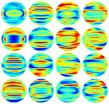Electroporation delivery of CRISPR/Cas9 system improves efficiency and throughput
2015-06-08
(Press-News.org) Jackson Laboratory researchers have shown that using an electric current to deliver the CRISPR/Cas9 system, in order to engineer genetic changes in laboratory mice, is highly efficient and significantly improves the system's throughput.
CRISPR/Cas9 has significantly enhanced the precision, speed and ease with which experimental organisms can be genetically modified in order to create models of human diseases. Mice carrying mutations in single or multiple genes or other modifications can be created in one step by injecting the CRISPR/Cas9 system into zygotes (the cells formed by the union of egg and sperm that proceed to divide and create a living organism). The technique is effective, but it requires microinjection, a technically demanding and time-consuming process that can only be done one zygote at a time.
In a paper highlighted in the June issue of the journal Genetics, Distinguished Visiting Professor Haoyi Wang, Ph.D., JAX associate director of genomic engineering technologies Wenning Qin, Ph.D., and colleagues demonstrated that electroporation--using an electric current to increase the permeability of the cell membrane--can be a faster, higher throughput alternative to microinjection.
"Development of the electroporation protocol brings significantly higher efficiency and higher throughput genome engineering in animal models," says Wang, who as a postdoctoral associate in the laboratory of Rudolf Jaenisch at MIT was involved in the early development of CRISPR technology. "Through this technique we were able to dramatically increase processing from one zygote at a time through microinjection to 20 to 50 zygotes simultaneously."
Thanks to this increase in efficiency, Wang adds, "we may now be in a position to generate mouse models of human disease alleles with unprecedented efficiency and throughput."
The researchers first used a mild acid solution to weaken the zona pellucida, a protective layer surrounding the zygote's membrane, and then tested several voltages to find one that delivers the CRISPR/Cas9 components inside the cell without causing it harm.
In addition to faster throughput, the researchers' electroporation technique may also be less invasive and damaging to the zygotes, as they achieved a birthrate comparable to that of untreated zygotes and nearly twice as high as the injected zygotes. The researchers are currently working to further refine the technique and optimize it for a variety of inbred mouse strains.
INFORMATION:
The research team includes scientists from the Medical College of Wisconsin in Milwaukee and the Chinese Academy of Sciences in Beijing. Their work is supported in part by the National Cancer Institute under award number P30CA034196, an institutional grant from The Jackson Laboratory and National Institute of Diabetes and Digestive and Kidney Diseases grant DK097605.
The Jackson Laboratory is an independent, nonprofit biomedical research institution and National Cancer Institute-designated Cancer Center based in Bar Harbor, Maine, with a facility in Sacramento, Calif., and a new genomic medicine institute in Farmington, Conn. It employs 1,700 staff, and its mission is to discover precise genomic solutions for disease and empower the global biomedical community in the shared quest to improve human health.
Qin et al.: Efficient CRISPR/Cas9-Mediated Genome Editing in Mice by Zygote Electroporation of Nuclease. Genetics, June 2015, http://dx.doi.org/10.1534/genetics.115.176594
ELSE PRESS RELEASES FROM THIS DATE:
2015-06-08
Metabolism experts are increasingly convinced that obesity and many of the pathogenic changes it entails, such as Metabolic Syndrome and type 2 diabetes, are a result of chronic inflammatory processes in fatty (adipose) tissue. The adipose tissue of obese people exhibits higher-than-normal quantities of almost all types of immune and inflammatory cells.
"We are quite convinced that immune cells play a role in the pathogenic consequences of obesity," says Professor Hans-Reimer Rodewald of the German Cancer Research Center (Deutsches Krebsforschungszentrum, DKFZ). "But ...
2015-06-08
Scientists have discovered a trigger that allows breast cancer cells to spread to the lungs.
They have found that blocking the signals in mice with breast cancer greatly reduces the number of secondary tumours found in the lungs.
The findings could lead to new therapies that stop the progression of breast cancer, the researchers at the University of Edinburgh say.
The majority of deaths from breast cancer are caused by the tumour spreading to other parts of the body. The lung is often one of the first organs to be affected.
Researchers at the University's MRC Centre ...
2015-06-08
NEW YORK (June 8, 2015) - Whole genome sequencing can quickly isolate the specific strain of bacteria causing an outbreak, identify the source of contamination, and enable rapid infection prevention to stop the spread of infection, according to a study published today. The findings, based on the examination of an outbreak of Pseudomonas aeruginosa in an Australian neonatal unit, appear in Infection Control & Hospital Epidemiology, the journal of the Society for Healthcare Epidemiology of America.
"Bacteria, such as P. aeruginosa, have evolved into many strains and frequently ...
2015-06-08
WASHINGTON, June 8, 2015 -- With Caitlyn Jenner's recent transition in the news, more attention is being paid to the transgender community. A big part of gender transition is hormone replacement therapy (HRT). This week, Reactions talks about the chemistry of HRT and what happens when the body undergoes major shifts in estrogen and testosterone -- two very powerful hormones. Check it out here: http://youtu.be/l5knvmy1Z3s.
Subscribe to the series at http://bit.ly/ACSReactions, and follow us on Twitter @ACSreactions to be the first to see our latest videos.
INFORMATION:
The ...
2015-06-08
WASHINGTON -- A new way of rapidly identifying bacteria, which requires a slight modification to a simple microscope, may change the way doctors approach treatment for patients who develop potentially deadly infections and may also help the food industry screen against contamination with harmful pathogens, according to researchers at the Korea Advanced Institute of Science and Technology (KAIST) in Daejeon, South Korea.
Described this week in The Optical Society (OSA) journal, Optics Express, the new approach involves bouncing laser light off individual bacteria under ...
2015-06-08
SAN FRANCISCO (June 8, 2015) -- Scientists from the California Academy of Sciences are celebrating World Ocean's Day with a slew of brand new marine discoveries--more than 100 species that are likely new to science. The Philippines is home to the most biologically diverse waters on Earth, and remains the centerpiece of the Academy's multi-year exploration of the Coral Triangle's biological treasures. Over the course of this seven-week undertaking, funded by the National Science Foundation, scientists collected countless marine specimens, including rare and new species of ...
2015-06-08
Bistatic/multistatic SAR has attracted global attention and made remarkable progress recently. Many key techniques have been overcome. Aiming to grasp the developing trend of the bistatic/multistatic SAR, the corresponding special issue has been compiled and published on SCIENCE CHINA Information Sciences, no. 6, 2015, which is devoted to integrate the key techniques together such as bistatic imaging, interferometry, change detection and the experiment with high quality etc.
The modified Stolt map in the frequency domain was introduced in the bistatic imaging algorithm ...
2015-06-08
The train control system is the heart of Chinese high-speed railways, which is a core technology to ensure safe operation as well as high throughput of trains (see Figure 1). The correctness of the train control system is closely related to people's life and property. How to guarantee the correctness of train control system is a grand challenge in both software engineering and control theory. Recently, a group of Chinese researchers proposed an approach to verify the correctness of train control system by combining simulation and formal verification, which was published ...
2015-06-08
New research from Uppsala University shows promising progress in the use of stem cells for treatment of spinal cord injury. The results, which are published in the scientific journal Scientific Reports, show that human stem cells that are transplanted to the injured spinal cord contribute to restoration of some sensory functions.
Traffic accidents and severe falls can cause ruptures of nerve fibers that enter/exit the spinal cord. Most commonly, these avulsion injuries affect the innervation of the arm and hand, and lead to paralysis, loss of sensation and cause chronic ...
2015-06-08
A fully renewable energy system, including all energy consuming sectors, is not only a possible but a viable solution for Finland, according to a new research. Researchers from Lappeenranta University of Technology (LUT) have investigated renewable energy system options for Finland in 2050. Results indicate that a fully renewable energy system is possible, and represents a competitive solution for Finland with careful planning.
In order to achieve the national greenhouse gas reduction targets for 2050, all sectors of the energy system need to be nearly emission free ...
LAST 30 PRESS RELEASES:
[Press-News.org] Electroporation delivery of CRISPR/Cas9 system improves efficiency and throughput


